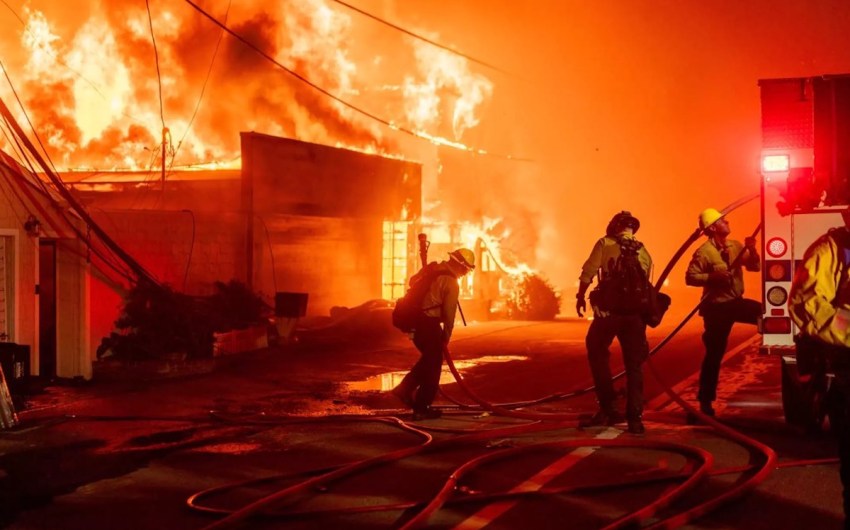Due to concerns about heat and problems with air conditioning, the organizers of this event have decided to reschedule it. Please check back for the new date.
Truth Seekers in the Age of Misinformation
Santa Barbara Journalists Starshine Roshell, Lisa Osborn, and Amy Marie Orozco Create ‘Moment of Truth’ to Help Sort Fact from Fiction

Once upon a time, sifting through the news of the day was a relatively simple process. Presenting “just the facts” was considered standard operating procedure for reputable news organizations, and sorting fact from fiction was something that didn’t present much of a challenge for most people.
How things have changed. With our daily assault of information and rapidly changing sources of intel, it’s tough to know what to believe anymore. In response to this information crisis, journalists and media educators Starshine Roshell, Lisa Osborn, and Amy Marie Orozco have banded together to help spread some truth about sorting fact from fiction in this age of rampant misinformation.
I recently caught up with them in advance of their presentation on Moment of Truth: Sorting Fact from Fiction in the Misinformation Age, which takes place on September 5 at TV Santa Barbara’s downtown media hub.
While this collaboration is new, made possible by a grant from the Association for Women in Communications (AWC) Advancement Fund and the fiscal sponsorship of the Santa Barbara Foundation, the passion for truth-telling is deeply rooted in these journalists.
Roshell started giving presentations about misinformation right after the January 6, 2021, assault on the United States Capitol by a mob of then-President Donald Trump supporters. “I was watching the television, and it just walloped me that there were so many people who couldn’t separate fact from fiction. They didn’t understand, weren’t able to see for themselves, research for themselves, question for themselves, the lies that were being told to them by the president and certain news organizations, which shall remain nameless,” said Roshell. “And I thought, ‘Oh my God, I have to do something about this. What can I do?’ So, I started looking into organizations that were doing this kind of work, and I signed up to be a newsroom to classroom volunteer with the News Literacy Project [newslit.org]. I’ve done several presentations through them, and then I’ve done a few on my own to local organizations.”
One of those organizations was KCSB, the radio station at UC Santa Barbara, where Osborn serves as news and public affairs director and does workshops for students and the community on various aspects of journalism and news writing. Another organization Roshell presented to was AWC, which all three are involved with. When she learned that AWC’s national advancement fund was offering grants for communications projects, Osborn sprang into action, first reaching out to Orozco to bounce the idea of a media literacy program.
“To me, the subject matter is very important. I think we’re in dire straits in this country. I said, ‘Let’s go for it.’ We took a walk in Carpinteria, and the ideas just kept rolling,” said Orozco, a longtime Carpinteria resident and former managing editor of the town’s Coastal View News. They ended their walk at Island Brewing Company, where they ran into Jena Jenkins, who runs the AgeWell program for the city. She was so enthused that she agreed to consider the presentation on the spot.
“I felt helpless for so long, and this is definitely a way to help remedy the situation,” said Orozco.
People of all ages and levels of comfort with technology can benefit from the information they have to share, an ever-evolving presentation that offers practical tips and easy advice to help people become savvy, responsible media consumers. Some of the specific skills include learning to spot doctored images, check sources, resist falling for “ragebait” — content that spurs you to share it without even verifying — and avoid spreading misinformation to other people.
One of the tools they’ll review is the SIFT tool, explained Osborn. “It’s the ‘stop, investigate the source, find better coverage, and then trace it back to its original source.’ And that tool alone, we kind of really drill into that component of it, because that’s a key tool to be able to analyze anything that you’re really reading to better consume it critically.”
She continued, “We do go into AI and some deep fakes with the election. And we’ll cover how manipulated images are being used to influence the upcoming election. We’ve already seen cases of that.”
“We get into the background too,” said Orozco. “How did we get here? In terms of fake news and that sort of thing.”
“This feels like a sort of a new world to people, to a lot of people. But an interesting element of that that I really have been thinking about is the fact that lying is not new, right? People have been lying for millennia, certainly for centuries. People have been lying with the spoken word and probably with the written word,” said Roshell.
“And we’ve all learned to filter what you know, what we hear, and what we read through our common-sense filter, but then, and even more recently, images have been doctored, and we’re all very aware of that. Nobody sees a model on the cover of a magazine and thinks, ‘Wow, her skin is just perfect.’ We all have a filter that we understand that images can be manipulated. So, I think when people start to feel overwhelmed about deep-fake videos and things that AI can do, it can be a little scary, right? We’re in this sort of new world. But one of the things we teach in this presentation is that it really is about using those exact same skills that we’ve always used. It’s your common sense, your critical thinking…. We have this amazing, giant tool of the internet, which can feel sort of scary and doom-imposing if you start to think that this is all the internet’s fault. But in fact, that is also our greatest tool in researching some of this information. And there’s so many amazing fact-checking sites out there now, and we share a lot of those at the end of this as well.”
She continued, “Another piece of this presentation is making sure people understand the difference between quality, standards-based journalism versus social media platforms, whose goal is not to inform, right? It’s just to engage — and how we all contribute to that.”
There’s also an important mental health component to sorting fact from fiction, particularly for younger people, Osborn said. “So, the more that we can train others to feel more confident in what they’re seeing and hearing, then the more that it can support their well-being and mental health. In my work with students and younger adults, they are more skeptical of everything because they don’t know what to believe, because they grew up with the Internet. So these are solid tools that they can use.”
The TVSB Moment of Truth presentation is a fundraiser for the nonprofit, which works to provide residents with the knowledge, resources, and tools to create their own original programming. Tickets for the event — taking place on Thursday, September 5, at 5:30 p.m. at 1219 State Street — are $20 and available at bit.ly/4dUHfHJ. The Moment of Truth team members emphasized that they are also available to provide free presentations to organizations. Email learn@momentoftruthtraining.org for more information.
Premier Events
Tue, Jan 14
7:00 PM
Santa Barbara
Lucinda Lane Album-Release Show, at SOhO
Tue, Jan 14
7:30 PM
Santa Barbara
UCSB Arts & Lectures Presents: An Evening with Esther Perel
Wed, Jan 15
5:00 PM
Santa Barbara
Public Meeting Commenting on VSFB SpaceX Launches
Wed, Jan 15
5:30 PM
SANTA BARBARA
California Avocados: A Delicious History
Thu, Jan 16
7:00 PM
Santa Barbara
Panic!: CBS and the 1950s Blacklist
Fri, Jan 17
7:00 PM
Santa Barbara
Baroque: Emergence
Fri, Jan 17
7:00 PM
Santa Barbara
Laguna Blanca Theatre Proudly Presents “Clue”
Fri, Jan 17
7:30 PM
Santa Barbara
Selah Dance Collective to Present “Palermo!”
Sat, Jan 18
10:00 AM
Carpineria
People’s March – Carpinteria
Sat, Jan 18
12:00 PM
Santa Barbara
People’s March – Santa Barbara
Tue, Jan 14 7:00 PM
Santa Barbara
Lucinda Lane Album-Release Show, at SOhO
Tue, Jan 14 7:30 PM
Santa Barbara
UCSB Arts & Lectures Presents: An Evening with Esther Perel
Wed, Jan 15 5:00 PM
Santa Barbara
Public Meeting Commenting on VSFB SpaceX Launches
Wed, Jan 15 5:30 PM
SANTA BARBARA
California Avocados: A Delicious History
Thu, Jan 16 7:00 PM
Santa Barbara
Panic!: CBS and the 1950s Blacklist
Fri, Jan 17 7:00 PM
Santa Barbara
Baroque: Emergence
Fri, Jan 17 7:00 PM
Santa Barbara
Laguna Blanca Theatre Proudly Presents “Clue”
Fri, Jan 17 7:30 PM
Santa Barbara
Selah Dance Collective to Present “Palermo!”
Sat, Jan 18 10:00 AM
Carpineria
People’s March – Carpinteria
Sat, Jan 18 12:00 PM
Santa Barbara





















